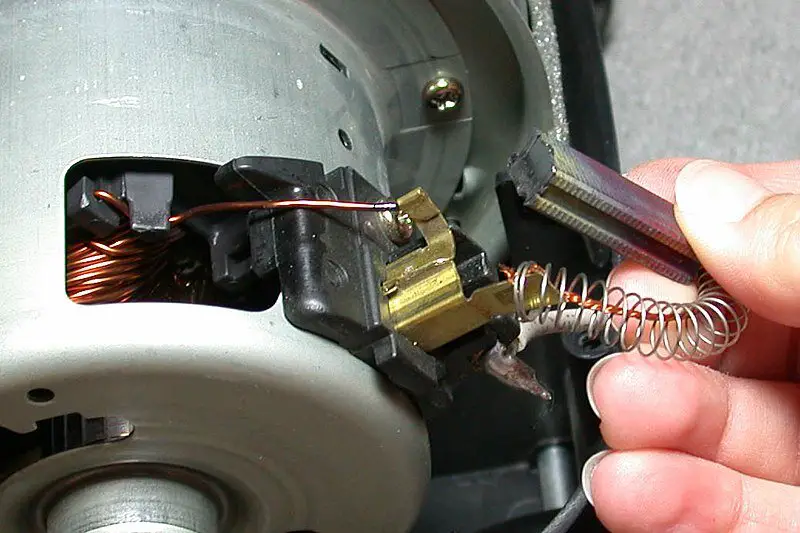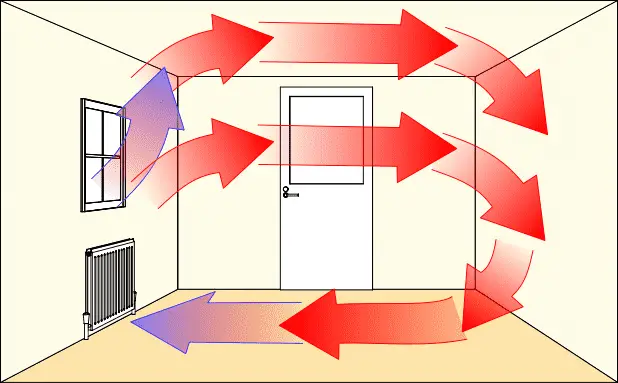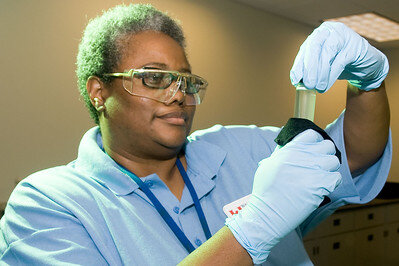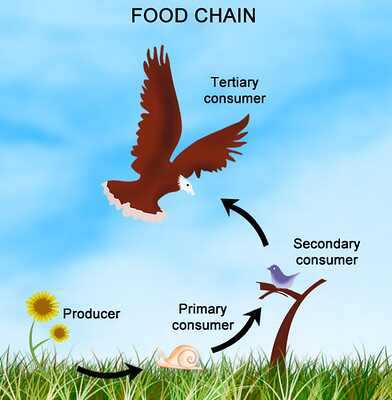Brushless Motor Vs Brushed Motor Comparison Discussed
Brushless motor vs brushed motor comparison can be made using various criteria, including; design, efficiency, reliability, operation, cost, advantages and disadvantages.
This article addresses the similarities and differences between brushless motor and brushed motor, as follows;
1). Design (as a Criterion for Comparison of Brushless Motor Vs Brushed Motor)
One of the key factors for differentiating between brushless and brushed DC and AC electric motors is their respective designs.
As the name implies, a brushless DC (BLDC) or AC induction motor has no 'brushes'; which are accessory components of electric motors that are used for electrical commutation or terminal-switching [4].
The design of a brushless motor comprises of two main components, namely; the rotor and stator.
These motors are also usually equipped with a permanent magnet, for creating the magnetic field which interacts with electric charges in the motor-circuit.
In typical cases, a brushless motor's design will feature electrical coils called 'armature windings' around the stator (stationary electromagnetic) component, and permanent magnets on the rotor (rotary electromagnetic) component.
These two accessories (armature, permanent magnet) are responsible for providing magnetism and electricity, respectively, which the brushless motor requires for its operation.
Brushed DC motor design features four main parts, namely; the rotor, stator, brushes and commutators.
The rotor is often a self-supported coil, and the permanent magnet is often part of the stator, and may be placed in a centralized position with respect to other components of the motor, so that the rotor coils rotate around it.
Brushes and commutators are used to maintain transmission of electricity through the rotor coils, which in turn sustains the electromagnetic interaction that drives the motor.
Differences between brushless and brushed motors in terms of design can be found in the components of each type of electric motor, as well as the arrangement or configuration of these components.
It must be noted that the details of design vary from one sub-type to another; such as the slight variations between shunt-wound and permanent magnet (PMDC) brushed motors.
In general, the design of brushless motors is considered better than that of brushless motors in terms of space-occupancy, friction, complexity, and operational efficiency.

2). Efficiency
The energy efficiency of an electric motor is a measure of the amount of electric current-input that is successfully converted to rotary mechanical output, by the system.
For brushless motors, their efficiency is relatively high, because the amount of waste energy that is released through friction and similar mechanisms, is small. This is a result of the absence of brushes and their associated accessories like commutators.
Energy transfer in brushless motors is a less-cumbersome process than it is in brushed motors, because the components involved in this transfer are relatively few; including the stator and rotor coil.
Theoretical reports of the efficiency of brushless motors place the value between 85 and 90 percent, although many studies have shown that measurement of efficiency under average operational circumstances may yield approximate values between 52 and 55 percent [3].
This is still considerably high, as the efficiencies of brushed motors measured under similar conditions will be much lower.
Factors that affect the efficiency of brushless motors include scale, and temperature [1]. Energy losses of a brushless motor include transmissive and frictional losses in armatures and stators.
The efficiency of a brushed motor ranges from 75 to 80 percent in theory, which is lower than 85 to 90 percent for brushless motors.
Under average operational circumstances, the energy losses from all movable parts of a brushed motor may easily bring its efficiency to below 50 percent.
Reasons why brushed motor is less efficient than brushless include higher average weight, relatively-rapid heating, slower average speeds, and poorer electromagnetic conversion.
Brushed motors have some advantages in spite of their lower efficiency, such as their usability for applications that depend solely on direct current (DC) and applications where there is minimal regulation equipment.
3). Reliability (as a Criterion for Comparison of Brushless Motor Vs Brushed Motor)
The reliability of an electric motor is closely tied to its durability, which in turn determines how long it will last while being used.
Brushless motors are fairly durable, because the absence of brushed makes it easier to produce a compact, simplistic design that is less prone to frictional wear and tear.
Compared to brushed motors, brushless motors last longer. The length of operation-life (or lifespan) of brushless motors may reach 20,000 hours or more; which is several times the maximum lifespan of brushed motors.
Brushless motors are reliable because they are designed to achieve long-term, efficient operation [5], with less energy loss due to sparking, overheating, and friction.
It is possible for brushless motors to experience failure with overheating of loss of rotary efficiency, which could occur as a result of poor power supply, high ambient temperature, and worn bearings. Yet, the risk and severity of failure are lower than those associated with brushed motors.
Brushed motors are not very reliable compared to brushless motors, because the presence of more movable components makes them more susceptible to frictional overheating, electrical connectivity problems, as well as wear and tear.
A brushed motor will last for less than 5,000 operational hours, on average; with some discussions citing 1,000 to 3,000 hours as the range of lifespan for most brushed motors. This implies that they are generally less-reliable than brushless motors for electromechanical conversion.
A brushless motor may fail due to any of multiple factors; including poor conductivity between commutators and brushes, frictional wear, and short circuitry.
However, the precise level of reliability of brushed motors varies with specific attributes like overall design and types of brushes being used.
4). Operation
The difference between brushed and brushless motors in terms of operation is that brushed motors depend on a rotary mechanical process to sustain electricity transmission through the system, while a brushless motor depends on the polarity of electric fields, to sustain electricity transmission, and to achieve rotation.
The operation of a brushed motor commences when electric current is transmitted to the coils, which generate and electric-charge field that interacts with magnetic fluxes from the permanent magnet (usually part of the stator) and causes the rotor to spin.
Because the rotor and stator need to be in electrical contact for rotation to continue, brushes and commutators are used.
The commutator usually takes form of a split ring, that is attached to, and rotates along with, the rotor. Brushes are attached to the stator so that they are in contact with the rotating commutator, and electric current continues to flow between stator and rotor assemblies while rotation occurs.
A brushless electric motor works by induced electromechanical rotation, where the rotor, which is usually equipped with a permanent magnet, rotates under the influence of attractive and repellent forces from the electric charges in the stator.
This means that brushless motors do not require physical contact between stators and rotors for current to be transmitted.

5). Cost (as a Criterion for Comparison of Brushless Motor Vs Brushed Motor)
The costs of both brushed and brushless motors vary widely, so that they range from few tens to several hundreds of dollars.
Brushless motors are generally more expensive than brushed motors, although the costs of a brushed and brushless motor may be similar if they have similar performance (such as a low-performance brushless motor and an average brushed motor).
6). Advantages
Brushless and brushed motors differ in their advantages or merits.
Advantages of brushless motors are;
1. Simple design
2. Minimal energy losses
3. High relative efficiency
4. Relatively high torque and rotary speed
5. High reliability
6. Low maintenance requirements
7. Effective speed control
8. Low noise pollution-risk
9. Long operational lifespan
Advantages of brushed motors are;
1. Relatively-low cost
2. Ease of remodeling to improve efficiency
3. Can be used with unregulated DC systems
4. High peak rotary torque
5. Multiple potential applications
7). Disadvantages (as a Criterion for Comparison of Brushless Motor Vs Brushed Motor)
A comparison of their disadvantages reveals differences between brushless and brushed motors.
Disadvantages of brushless motors are;
1. Relatively-high cost
2. Control circuit requirement
3. Highly-specialized usage and maintenance
4. Complexity of remodeling, improvement and repair
5. High dependence on the use of controllers for speed regulation
Disadvantages of brushed motors are;
1. Low relative efficiency
2. High susceptibility to frictional wear
3. Brushes and commutators require occasional replacement
4. Associated with noise pollution
5. Relatively-low torque and rotational speed
Conclusion
Criteria that can be used to analyze the differences and similarities between brushless and brushed electric motors are;
1. Design
2. Efficiency
3. Reliability
4. Operation
5. Cost
6. Advantages
7. Disadvantages
The table below summarizes brushless vs brushed motor comparison using these (7) criteria;
Comparison Criteria | Brushless Motor | Brushed Motor |
Design (Main Components) | Rotor, stator | Rotor, stator, brushes, commutators |
Efficiency (Ideal/Theoretical Values) | 75-80% | 85-90% |
Reliability (Relative) | High | Low |
Operation | Depends on electric field polarity | Depends on rotary mechanism |
Relative Cost | High | Low |
Advantages | Simple design, minimal energy loss, high efficiency, high rotary speed and torque, reliability, low maintenance requirements, speed control, low noise pollution, long lifespan | Low cost, ease of remodeling, unregulated DC usage, high peak torque, multiple applications |
Disadvantages | High cost, closed circuit requirement, specialization, complexity, and need for controller-speed regulation | Low efficiency, frictional wear, occasional component replacement, noise, low torque and speed |
References
1). Choi, J.; Lee, J. H.; Jung, Y-G.; Park, H. (2020). "Enhanced efficiency of the brushless direct current motor by introducing air flow for cooling." Springer, Heat and Mass Transfer 56(3). Available at: https://doi.org/10.1007/s00231-020-02827-8. (Accessed 19 May 2023).
2). He, C.; Wu, T. (2018). "Permanent Magnet Brushless DC Motor and Mechanical Structure Design for the Electric Impact Wrench System." Energies 11(6):1360. Available at: https://doi.org/10.3390/en11061360. (Accessed 19 May 2023).
3). Nayak, D.; Shivarudraswamy, R. (2021). "Loss and Efficiency Analysis of BLDC Motor and Universal Motor by Mathematical Modelling in the Mixer Grinder." Journal of The Institution of Engineers (India) Series B 103(1). Available at: https://doi.org/10.1007/s40031-021-00652-z. (Accessed 19 May 2023).
4). Shantarenko, S.; Ponomarev, E.; Vaganov, A. (2021). "Performance Control of the Commutator-and-brush Assembly of the Traction Motor." Transportation Research Procedia, Volume 54, 2021, Pages 854-861. Available at: https://doi.org/10.1016/j.trpro.2021.02.139. (Accessed 19 May 2023).
5). Xu, H.; Wu, L.; Chen, R. (2016). "Optimization of performance and reliability of brushless direct current motor." 2016 11th International Conference on Reliability, Maintainability and Safety (ICRMS), Hangzhou, China, 2016, pp. 1-4. Available at: https://doi.org/10.1109/ICRMS.2016.8050143. (Accessed 19 May 2023).




